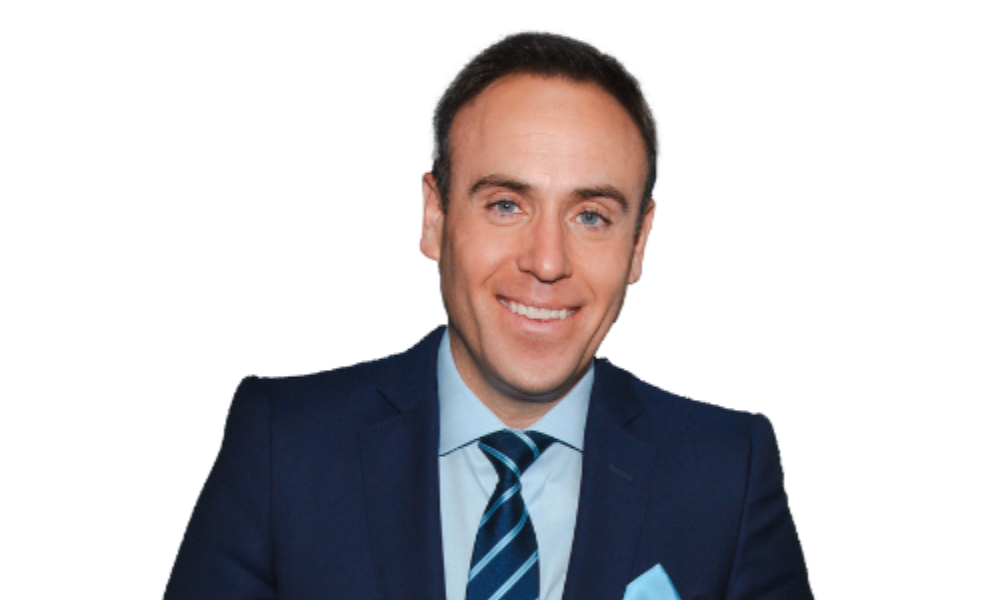Lessons learned as a former BNN Bloomberg host goes all-in on social media

Last fall, I made one of the biggest personal and professional leaps of my life: stepping away from the anchor chair at BNN Bloomberg after more than two decades in broadcast journalism. The studio—with its control room hum and live TV urgency—had been home. But I could feel the conversation around money moving elsewhere.
Not to boardrooms or news desks, but to smartphones. To short-form videos. To scrollable stories on YouTube and TikTok. I wasn’t just watching this shift—I was feeling it as a parent. My daughters are growing up in a world of record-high housing prices and economic uncertainty. In a few years, they’ll head to university, and I want them—and their peers—to approach money with confidence, not confusion.
That’s what led my wife, Caroline Lesley, and me to launch Ticker Take, a digital-first platform for financial storytelling. In six months, our content has surpassed one billion views across YouTube, TikTok, Instagram, and X. But more than a milestone, that number reflects a bigger reality: Canadians—especially younger ones—are turning to new places to learn about money.
The data backs it up. According to the Canadian Securities Administrators, 45% of Canadian investors manage their own portfolios, and nearly one-third opened self-directed accounts in the past two years. A 2024 PYMNTS Intelligence report found that 79% of millennials and Gen Z turn to social media for financial advice—with 62% of Gen Z using TikTok specifically to understand money.
If investing is now instant, financial literacy needs to keep up. But the rise of “finfluencers” has created a credibility gap. While some share valuable insights, others chase virality over accuracy—and the stakes are real. Regulators have raised valid concerns about misinformation.
Just last week, the Ontario Securities Commission joined international regulators in taking action against unlawful financial content online. Their findings show that 35% of retail investors say they’ve made financial decisions based on finfluencer content—and those individuals are 12 times more likely to have been scammed on social media. It’s a clear reminder that while these voices are important, caution is needed.
At the same time, we shouldn’t ignore the promise of this shift. Social media is now a primary source of financial information—especially for younger Canadians. If these platforms suddenly went dark, we’d lose one of the most accessible entry points into investing for a generation priced out of traditional wealth-building tools.
The challenge—and opportunity—is to make this ecosystem better. That means calling out misinformation, but also supporting creators who focus on transparency, accuracy, and trust.
As a journalist—not a financial advisor—my role is to help close that gap. With a background in economics and a career breaking down numbers and trends, I focus on translating complex financial stories into clear, concise videos designed to inform, not persuade. The goal isn’t advice. It’s empowerment—helping viewers better understand what’s happening in the markets and why it matters.
That requires consistency. In the age of algorithmic attention, financial content must be accurate, timely, and accessible. As a creator, I’ve learned there are no days off—every earnings season, inflation release, or policy shift brings questions from viewers who want more than a headline.
We’ve built a channel that goes beyond my voice. From financial advisors and industry veterans to experts from ETF provider Global X, we bring diverse perspectives to break down everything from P/E ratios to the most common mistakes investors make. Our goal is to make financial conversations feel like just that—conversations—not lectures or clickbait.
This approach resonates. Viewers across Canada—from Gen Z novices to seasoned traders—seek financial clarity. They comment, ask follow-ups, share stories. That engagement isn’t spectacle; it’s trust.
Traditional financial media still matters—and I continue contributing to BNN Bloomberg. But for a generation facing a cost-of-living crisis and a looming “Great Wealth Transfer,” financial education must evolve. It needs to meet people where they are, in formats they trust, and at the speed they expect.
This shift brings opportunity—and responsibility. Regulators, educators, financial institutions, and creators all play a role in shaping a more inclusive, relatable financial ecosystem. That means recognizing that social media, when done responsibly, isn’t just marketing or distraction. It’s one of the most powerful ways to engage Canadians who’ve long felt left out of the financial conversation.
As a journalist, a parent, and someone who cares deeply about how the next generation will navigate money, I hope we can encourage greater collaboration across the financial landscape. Let’s make investing—and financial understanding—more accessible, trusted, and reflective of the world young Canadians actually live in.
Because ultimately, it’s not about racking up views. It’s about what those views represent: a rising demand for clarity over noise, substance over spin, and trust over hype.
The stock market doesn’t need to be a mystery. With the right mix of credibility, clarity, and connection, it becomes a story we can all understand—and share—one video at a time.
Jon Erlichman is the host of Ticker Take with Jon Erlichman on YouTube and a contributor to BNN Bloomberg.


